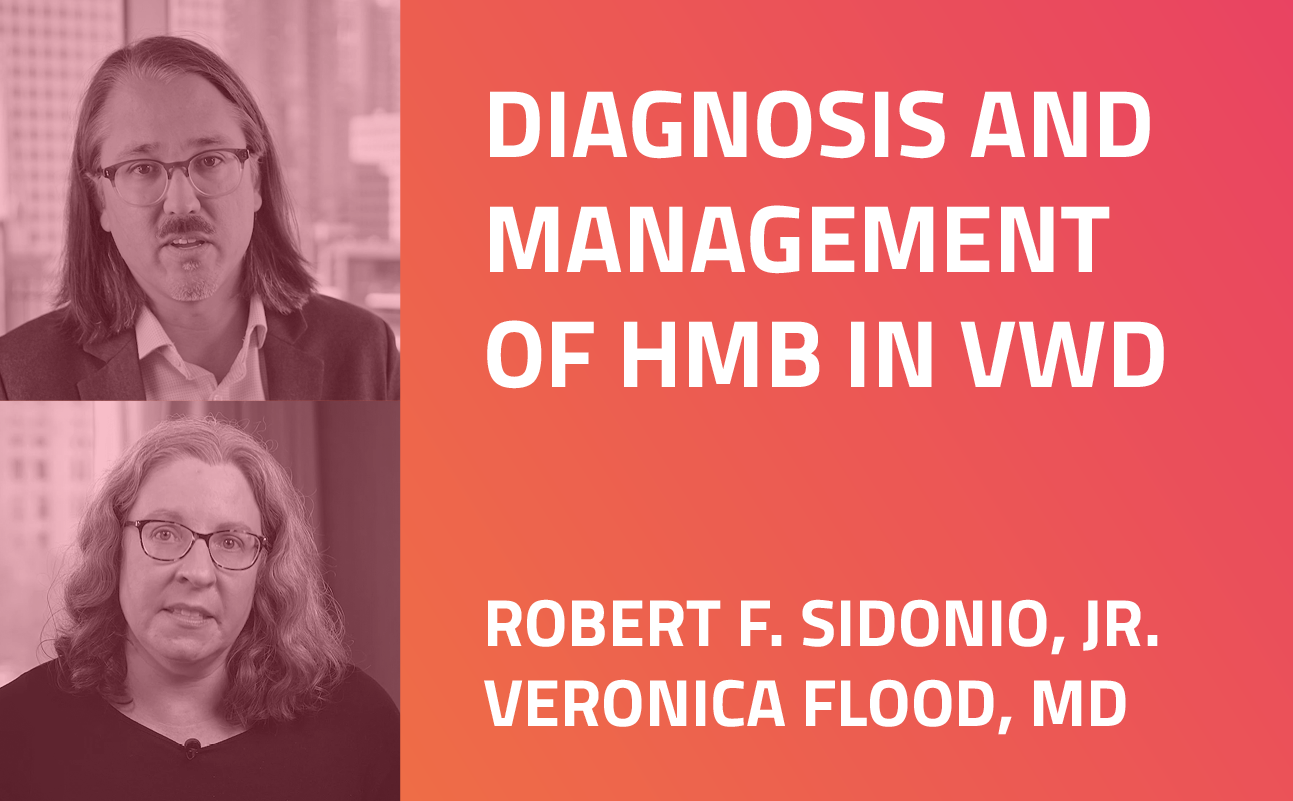
VWD AND GYNAECOLOGY / OBSTETRICS
Bleeding disorders, including von Willebrand disease (VWD), are estimated to be responsible for heavy menstrual bleeding (HMB) in one in five women with the condition.1 Bleeding disorders are also a major risk factor for excessive bleeding during childbirth and postpartum. Despite the prominent role of bleeding disorders as causes of excessive vaginal bleeding, and the fact that VWD is the most common bleeding disorder, only a fraction of women that present with excessive vaginal bleeding are tested for VWD.2

Due to lack of awareness and education, VWD often remains undiagnosed, or the diagnosis is delayed. Without diagnosis and treatment, these women may experience severe physical and psychological consequences of their HMB, including fatigue, anaemia, anxiety and depression.1
The role of gynaecologists and obstetricians
Almost all women with VWD in the reproductive age experience excessive vaginal bleeding.3 Moreover, heavy periods are often the first prominent bleeding symptom as girls with VWD enter puberty. As a gynaecologist or obstetrician, you are often the first healthcare provider with whom these girls or their caretakers discuss an extensive bleeding tendency. Your consultations therefore present a first opportunity to help identify patients who may benefit from further diagnostic evaluation for a bleeding disorder. This opportunity is particularly important in societies that stigmatise vaginal bleeding, or for patients who may have become desensitised to their heavy periods and may feel unheard or poorly understood.2 Moreover, since bleeding disorders such as VWD are hereditary conditions, a diagnosis of VWD often helps to identify additional family members at risk.
Although increased awareness among healthcare providers and patients is the most important step in identifying patients at risk of bleeding, diagnosing VWD remains a challenging task due to the complexity of the diagnostic process.2 If one of your patients has recently presented with excessive vaginal bleeding, we recommend that you ask your patient to document her period with our period assessment chart. You may also suggest performing our bleeding test with your patient. The test will support you taking a first decision whether further investigations are needed – and could change your patient’s life!
There are several treatment options for women with VWD and HMB, and guidelines for the management of HMB due to VWD are available.4 Treatment should be individualised, taking factors such as age, lifestyle, pregnancy wishes and other patient preferences into consideration. It is important to note that some treatments, e.g. contraceptives, are often effective in controlling HMB, but will not protect your patients with VWD from bleeding after trauma, an accident, or during surgery, therefore a complete diagnosis is crucial. Moreover, excessive vaginal bleeding is often met with stigmatisation and dismissal. Together with limitations in everyday life, physical activities and social interactions due to HMB, this lack of recognition can place a heavy mental burden on your patients.5,6 Without sufficient social support, your patients with VWD may even develop anxieties and depression.
Women with VWD can have successful pregnancies and deliver healthy babies. However, without diagnosis and treatment, they may experience excessive bleeding during and after delivery. Therefore, careful planning and monitoring are essential to ensure a normal delivery. Whenever possible, pregnancy and delivery should be discussed and planned well in advance and together with a multidisciplinary team including a specialised haematologist at a treatment centre.8,9 VWDtest also offers further information about the aetiology, diagnosis and management of VWD, as well as insight into the typical journey of patients with VWD.
References
- Kadir RA et al. Lancet 1998; 351:485-9.
- Corrales-Medina FF et al. Blood Rev 2023; 58:101018.
- de Wee EM, et al. Thromb Haemost 2012; 108:683-92.
- Connell NT et al. Blood Adv 2021; 5:301-25.
- VanderMeulen H, et al. Hematology Am Soc Hematol Educ Program 2022 1: 631-6.
- Sanigorska A, et al. Res Pract Thromb Haemost 2022; 6:e12652.
- Roberts JC, et al. Haemophilia 2022; doi: 10.1111/hae.14725.
- Leebeek FWG, et al. Blood 2020; 136:2143-50.
- Janbain M and Kouides P Int J Womens Health 2022; 14:1307-13.

